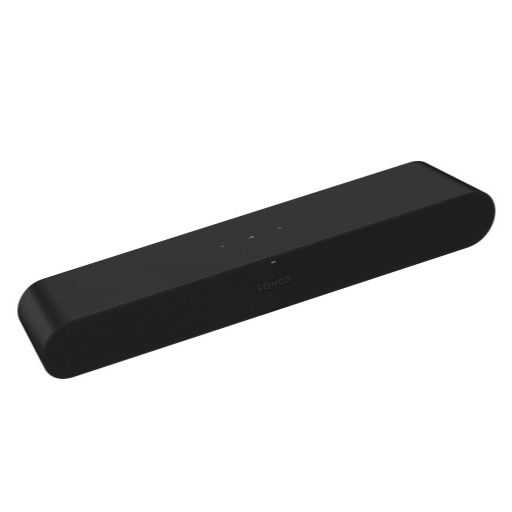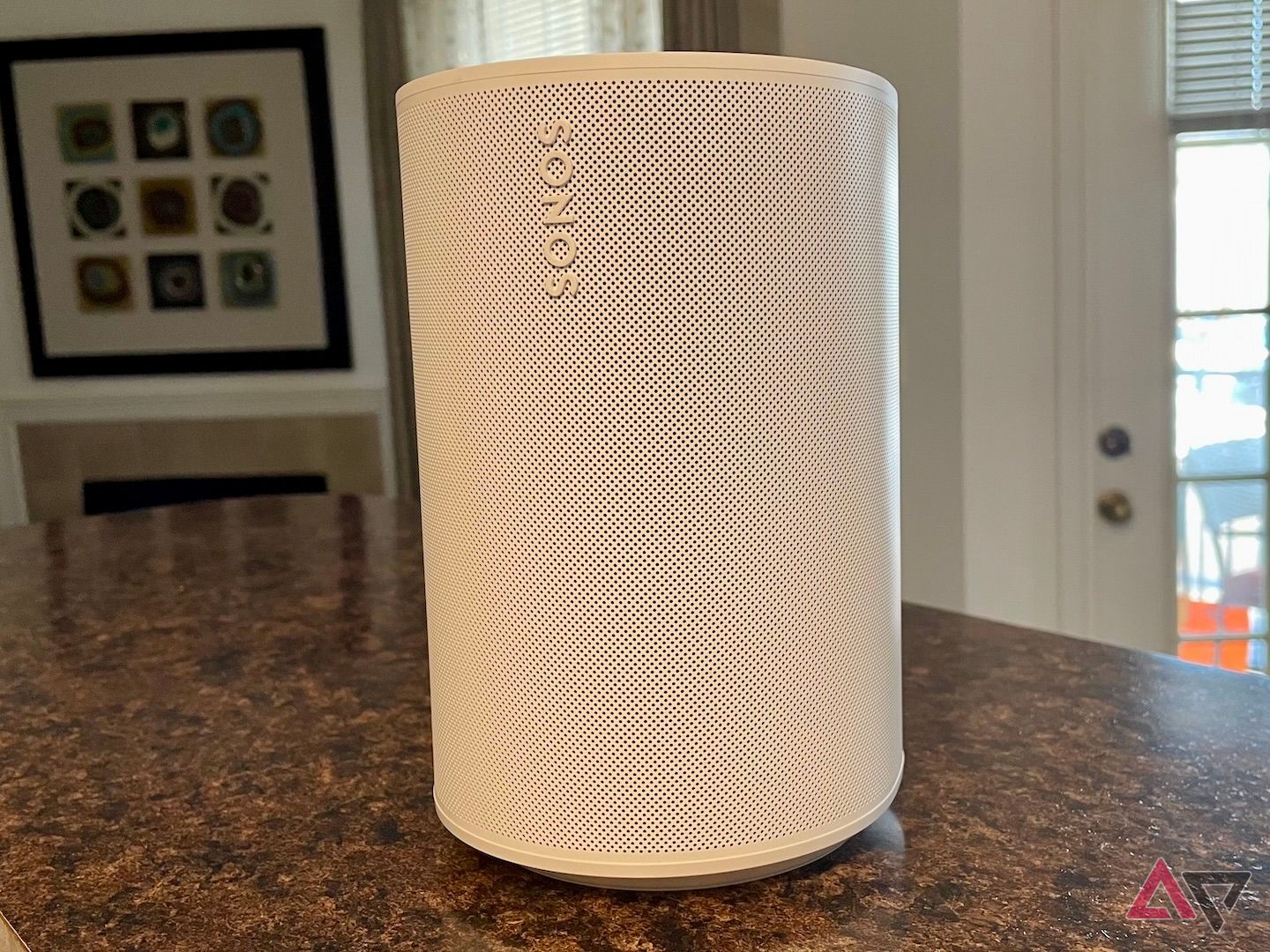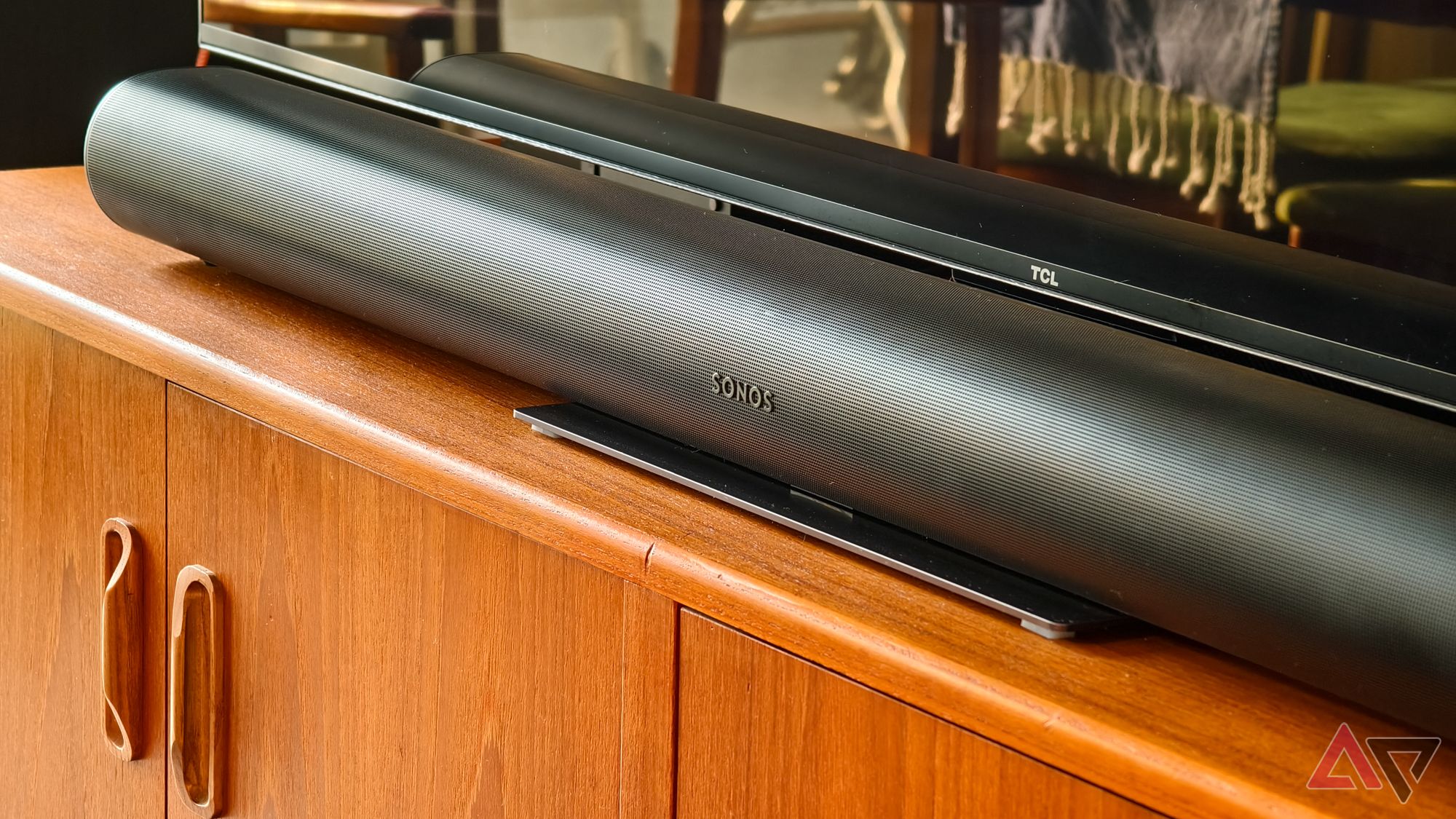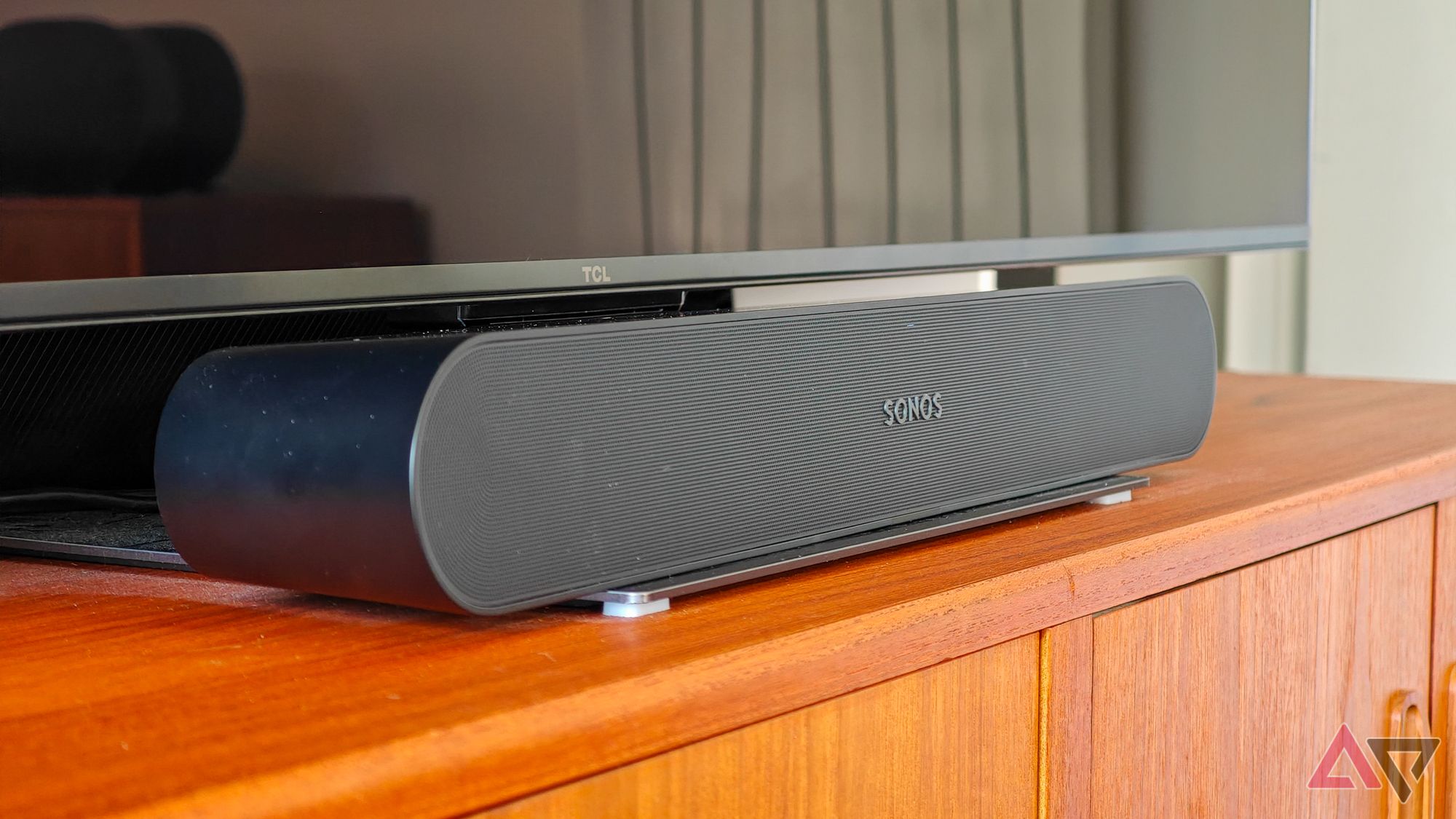Sonos is best known for audio gear at the pricier end of regular consumer tech, but not all of its products fall into that bucket. The Ray soundbar is remarkably affordable for what it offers — if not quite a true budget buy — and serves double duty as an affordable option for Sonos newbies or an additional soundbar for a smaller office or bedroom.
The Ray won’t match the Beam or Arc in pure sound, and more importantly, it lacks a couple of key features — the absence of HDMI is particularly off-putting. But you’ll struggle to get better audio for below $300, especially if you have other Sonos speakers in your system already.

Sonos Ray
The Ray may be Sonos’s smallest and cheapest soundbar, but the company didn’t skimp on the sound — this delivers crisp, deep audio, so long as you keep to smaller rooms. Just be aware that the company’s cost-cutting came by dropping features like HDMI input and voice controls, so this is only built for the basics.
- Compact design
- Affordable price
- Crisp, clear sound
- No HDMI input
- Trueplay is iOS-only
- Only suited to smaller rooms
Price and availability
The Sonos Ray launched in 2022, but since Sonos moves slowly, it is still one of the company’s relatively recent products. It costs $279, and you can pick it up directly from Sonos or other electronics stores. Given that the next Sonos soundbar up is the $499 Beam (Gen 2), that’s not a bad price at all.
Specifications
- Ports
- Optical, Ethernet
What’s good about the Sonos Ray?
All about the audio
The best thing about the Sonos Ray is how it sounds. That may seem obvious when we’re talking about a speaker, but the point is that this is a soundbar with few frills and a focus on audio above all.
There are four drivers in here, a pair of tweeters and a pair of mid-woofers, meaning there’s no dedicated bass output. Instead, Sonos has relied on those mid-woofers to interact with its bass reflex design and produce the low-end you need.
For the most part, this works, as long as your room is about the right size. No, this won’t deliver absolutely booming bass, I’m sorry. But there’s an awful lot more rumble than you’d expect from the size of the thing, whether you need it for thumping house music or the booming explosions of the latest Michael Bay movie.
Just as importantly, the sound output is crisp and clear across the spectrum. That clarity helps with mumbly dialogue, but also gives audio the intricacy required to serve as a true music speaker for whatever room it’s in, not just a soundbar.
If you need more from it, you can pair the Ray with the Sonos Sub Mini for a bass boost or even connect it to some Era 100 speakers for a surround setup — though if you’re ready to invest that much in your gear you’d probably be better served by an upgrade to the latest Beam.

Sonos Era 100 review: Room-filling sound meets thoughtful improvements
If this speaker proves anything, it’s that the new ‘era’ of Sonos is going to be a good one
Of course, you can also connect it to a Sonos network for multi-room audio with other company speakers. This is as easy as ever to set up, giving you seamless sound across your home. The Sonos app also allows you to adjust the speaker’s EQ, turn off the touch controls, and tweak other settings. It also doubles as a hub for music playback on the speaker, so you can access multiple streaming services like Spotify or YouTube Music all in one place.
Of course, the other thing that might be appealing about the Ray beyond the price is its size. This thing is small for a soundbar, less than two feet long, making it much easier to squeeze onto small shelves or cramped TV cabinets. It’s small enough to even get away with using it as a PC speaker on a desk — believe me; I’ve tried — though you will need a roomy workspace to pull it off.
Available in white or black, its angled design is sleek and modern, the sort of speaker you’ll be happy to show off rather than hide away, and the white model is especially well suited to wall-mounting.
What’s bad about the Sonos Ray?
Few frills
So, if the audio is great, what isn’t? Mostly just the various Sonos luxuries and niceties omitted from its cheapest soundbar.
The big one is an HDMI input, meaning you’re limited to using an Optical lead to connect the Ray to your TV. That has a couple of knock-on effects, but the big one is that depending on your TV and remote, you may be unable to use your remote to control the Ray’s volume. That’s been the case for me, so adjusting the speaker’s output means standing up to use the on-device touch controls or flicking through my phone for the Sonos app. This would probably be a dealbreaker for me, so double-check compatibility before you commit.
Unsurprisingly, for the size, there’s also no support for
Dolby Atmos
(which wouldn’t work without that HDMI connection anyway).
Like a few other Sonos speakers, the Ray also lacks the option for either Bluetooth or 3.5mm line-in connections. You likely wouldn’t use those for your TV anyway, but it makes it trickier to use the Ray to play music from a record player or a friend’s phone since everything needs to be handled through the Sonos or Spotify apps over your home’s Wi-Fi connection. Unsurprisingly, for the size, there’s also no support for Dolby Atmos (which wouldn’t work without that HDMI connection anyway).
With no microphones, you can’t control the Ray using voice controls or have it double as a smart speaker. It also only supports Sonos’s original version of its Trueplay audio tuning tech, which requires an iOS device to set up – not a problem as long as someone in the house has an iPhone, but as an Android site, we feel obliged to gripe about it.
Then there’s the final reason to be hesitant about the Ray, and we are back at audio: just be aware of its limitations. This speaker is designed to power bedrooms, offices, and smaller living rooms. In any of those, it’ll do just fine, but don’t sit the Ray by itself in a cavernous lounge or kitchen and then get annoyed if it sounds a little thin — for those rooms, you really need a Beam or Arc.

Sonos Arc review: More than you need, exactly what you want
The Arc is the best soundbar around for big rooms where money doesn’t matter
My living room is open-plan, which means it’s a little on the larger side by Ray’s standards, and at times, that’s shown. For music and most TV, it gets the job done, but when I sat down to watch Mad Max: Fury Road, I found myself wishing for more depth to the sonics. That’s hardly the speaker’s fault, but bear in mind that even if Ray’s price is tempting, it won’t hold up in bigger rooms.
Should you buy it?
The Ray is a great buy for a few reasons. If you need a soundbar for a smaller room or have to squeeze it into a tighter space, the compact size makes it a great option. Even for medium-sized rooms, it packs more power than you’d expect for the price, and its ability to connect to other Sonos gear makes it ideal as an addition to an existing Sonos system or a starting point to build one.
Just beware of its limitations. You need to be confident that the lack of an HDMI input won’t be an issue and that you don’t need features like Bluetooth, voice controls, or Atmos. If you do, you should spend more on a Beam or look at soundbars from other brands that often pack those features in at this price, albeit usually with compromises elsewhere.

Sonos Ray
The Ray is Sonos’s smallest and most affordable soundbar, built for bedrooms and smaller spaces. This will thrive in the right size room, but remember that it won’t suit big living rooms and lacks some of the fancier features and frills of other Sonos speakers.






